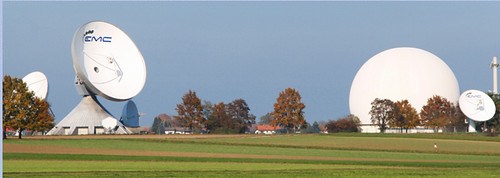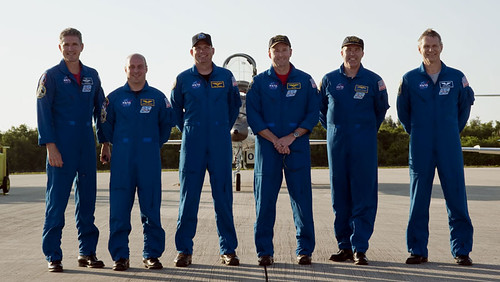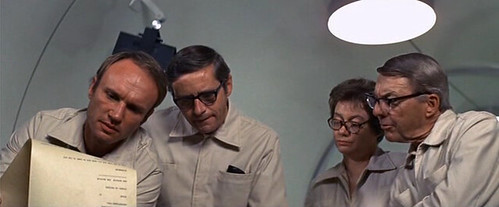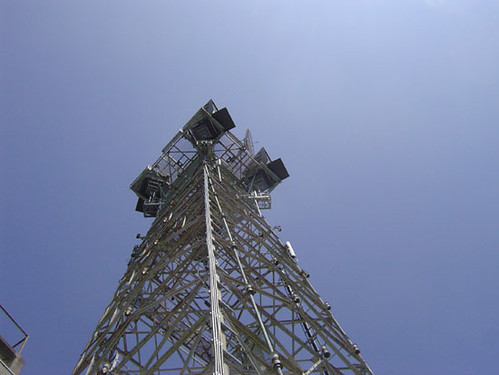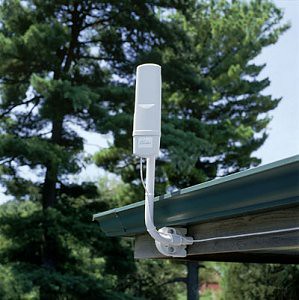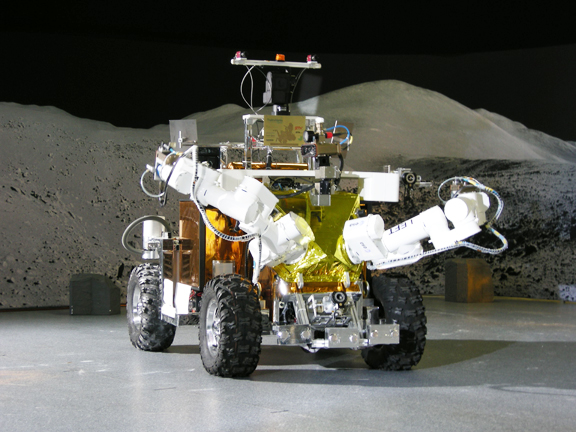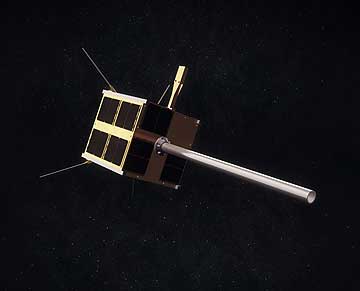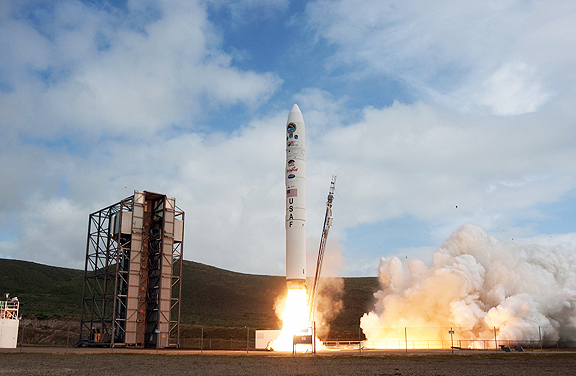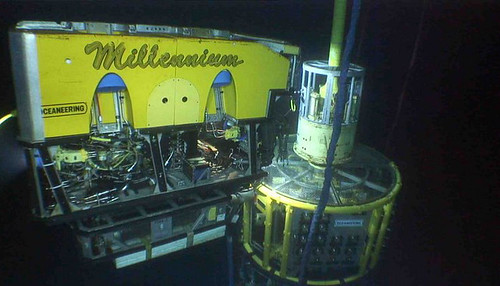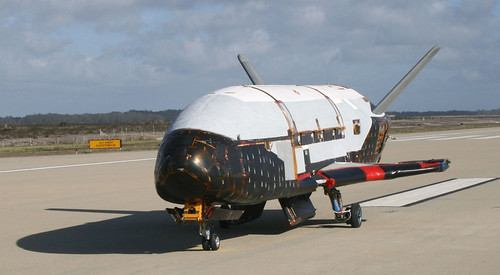Thales Alenia Space delivers man-like robot on mobile platform to European Space Agency following successful testing and qualification.
[SatNews – 04/30/2010]
Russia launches Soyuz-U space rocket carrying Progress M-05M space freighter on supply mission to International Space Station.
[brahmand.com- 04/30/2010]
Tauri Group study finds commercial launch prices have dropped 34% since 1999.
[Satellite Today – 04/30/2010]
XTAR’s Vice President of Government Services Bill Schmidt passes away April 28 following heart attack.
[Satellite Today – 04/30/2010]
Hall-Of-Fame astronaut Story Musgrave says U.S. Space Program is now hampered by Administration’s fear to act; opposite attitude of 60’s when space program drove most technologically innovative decade in history.
[SatNews – 04/29/2010]
RADARSAT images spread of oil spill in Gulf of Mexico cause by oil rig explosion.
[SatNews – 04/29/2010]
Socialist Republic of Viet Nam hosts joint XXXVIII session of Board and meeting of Operations Committee of Intersputnik; host H.E. Mr. Le Nam Thang is elected Chairman of Board and of the joint session.
[SatNews – 04/29/2010]
Integral Systems announces seven year extended interference detection and geolocation maintenance contract with Sky Perfect JSAT.
[MarketWatch – 04/29/2010]
Orbital Sciences gets contract from U.S. Naval Research Laboratory for spacecraft and airborne system support services worth around $95m over 5 years.
[SatNews – 04/29/2010]
Iridium establishes a Government Advisory Board comprised of former senior U.S. government officials and business leaders to provide counsel to the company as it continues to enhance suite of products and services for government agencies.
[SatNews – 04/29/2010]
Lockheed Martin delivers cutting-edge communications system module for second satellite in U.S. Navy’s Mobile user Objective System (MUOS) program.
[PR Newswire – 04/29/2010]
International Space University and American Institute of Aeronautics and Astronautics join in strategic partnership to further educational opportunities internationally and enhance health of future aerospace workforce.
[SatNews – 04/29/2010]
Norwegian satellite AIS Sat-1 to be launched from India on May 9 will be used by maritime authorities as additional means of ensuring safety at sea in the High North.
[SatNews – 04/29/2010]
Global Gateway Media & Communications broadcasts Ex-Mayor of NY Ed Koch’s speech in Los Angeles through Speedia Media’s satellite broadcast network in the U.S., Canada, Mexico, and Central America.
[MarketWatch – 04/29/2010]
NASA delays launch of one of its three remaining space shuttle launches until November to allow upgrade of magnet in Alpha Magnetic Spectrometer program.
[SatNews – 04/29/2010]
Vizada Networks introduces redeveloped Global Field Support Program, created in close co-operation with Global VSAT Forum to improve quality of customer support through training.
[SatNews – 04/29/2010]
Air Force X-37 Falcon Hypersonic Technology Vehicle-2, launched from Vandenberg April 22, achieves controlled flight at more than Mach 20 at assumed elevation of 36,000 feet, but disappears 9 minutes after launch.
[R&D Magazine – 04/28/2010]
Newtec’s FlexACM® DVB-S2 Elevation IP modems will support the National Polar-orbiting Operational Environmental Satellite System (NPOESS) in climate research, as well as increase bandwidth for communication.
[SatNews – 04/28/2010]
Integral Systems acquires Sophia Wireless, getting industry-leading technology in high-power, high-frequency Solid State Power Amplifiers (SSPAs) and Block Upconverters (BUCs) for satellite and radar communications.
[MarketWatch – 04/28/2010]
Swedish Microwave debuts new X-Band products, including professional PLL LNB’s.
[SatNews – 04/28/2010]
Australia’s hosted payload on Intelsat IS-22 satellite is a full UHV payload that will also benefit the USA.
[Defense Industry Daily – 04/28/2010]
SES ASTRA and Samsung join forces to promote 3DTV.
[SatNews – 04/28/2010]
Gilat will Provide SkyEdge II broadband satellite communications network to Kazakhstan based telecommunication operator.
[TMCnet – 04/28/2010]
Thrane & Thrane rebrands AeroSB products as AVIATOR, intending new brand to become synonymous with power of Inmarsat SwiftBroadband and at leading edge of that terminal technology.
[SatNews – 04/28/2010]
DirecTV is first provider to offer national distribution in High Definition (HD) of Spanish-language channels Univision and TeleFutura.
[MarketWatch – 04/28/2010]
Hughes and Avanti expand partnership in Europe as Hughes maneuvers to better compete with ViaSat, planning 48 gateway Earth stations for Hylas 1 satellite.
[Space News – 04/28/2010]
Russia Space Forces launches military communications satellite from Plesetsk Cosmodrome aboard Kosmos 2463 light booster.
[Aviation Week – 04/28/2010]
Sky Vision Global Networks launches new local hub in Nairobi, Kenya, to support company’s satellite based virtual private network solution.
[SatNews – 04/28/2010]
Ericsson equips Indian DTH operator Tata Sky with head-end upgrade enabling it to launch HD channels and increase SD offerings.
[SatNews – 04/28/2010]
Brightpoint announces global supply chain solutions agreement with Inmarsat; will provide fully integrated solution for fulfillment and distribution of IsatPhone Pro.
[MarketWatch – 04/27/2010]
A third launch contract has been awarded to United Launch Alliance to loft an advanced military targeting and communications satellite for the U.S. Air Force Space and Missile Systems Center.
[Florida Today – 04/27/2010]
Orbital Sciences successfully launches first Minotaur IV rocket in support of Defense Advanced Research Projects Agency’s Hypersonic Technology Vehicle-2 program.
[SatNews – 04/27/2010]
Global Gateway expands into radio with its agreement with All Patriots Media Network, broadcasting Los Angeles programs from four stations around U.S.
[MarketWatch – 04/27/2010]
Caprock Government Solutions announces expansion of satellite and terrestrial infrastructure to include bandwidth-on-demand to more than 35 major Department of Defense locations, and direct connections at 24 critical Defense Information Systems Network access points.
[SatNews – 04/27/2010]
GE Satellite is selected by NASA to provide Ku-band satellite connectivity for its ground breaking science mission to study atmospheric and environmental conditions across the Pacific via Unmanned Aerial Vehicle.
[SatNews – 04/27/2010]
World Teleport Association announces results of elections for Board of Directors for fiscal year beginning April 1 2010.
[SatNews – 04/27/2010]
In-flight acceptance of Helios IIB satellite is completed by Astrium on behalf of the French Defence Procurement Agency under delegation from French space agency.
[SatNews – 04/27/2010]
Thuraya further develops growth in key vertical markets across Saudi Arabia with Al Farhan partnership.
[SatNews – 04/27/2010]
Blue Sky Network’s GPS-base aviation tracking devices to be used by Peruvian Air Force for search and rescue operations.
[SatNews – 04/27/2010]
Images from European Space Agency’s Planck space observatory give astronomers way to understand complex physics shaping dust and gas in our Galaxy.
[SatNews – 04/27/2010]
GOES-15, final spacecraft in latest series of NOAA geostationary satellites, takes its first infrared photo of Earth.
[SatNews – 04/27/2010]
Japan to launch "space yacht" Ikaros, to be propelled by solar particles.
[SatNews – 04/27/2010]
International Launch Services places SES-1 satellite into orbit aboard Proton-M rocket deployed from Baikonur Spaceport in Kazakhstan.
[UPI – 04/26/2010]
Gilat to provide SkyEdge communications network to Kazakhstan customer ASTEL.
[MarketWatch – 04/26/2010]
Comtech Telecommunications receives $1.2m order for AN/TRC-170 modem upgrade kits and extended warranty coverage from major contractor under U.S. Army Commoon Hardware Software-3 contract.
[MarketWatch – 04/26/2010]
World Communications Center signs blanket P.O. agreement with NASA for satellite communications equipment and services that connect via the Inmarsat and Iridium networks.
[Business Wire – 04/26/2010]
United Launch Alliance gets contract modification to perform launch services for the Advance Extremely High Frequency-3 satellite aboard expendable Atlas 5.
[SatNews – 04/26/2010]
ProTECTS Alliance gains momentum in efforts to drive two-way satellite tracking and messaging technologies.
[SatNews – 04/26/2010]
Intellian Technologies completes characterization of Eutelsat on its 60cm maritime satellite VSAT system.
[SatNews – 04/26/2010]
European Union Satellite Centre signs multiyear enterprise license agreement with ESRI Espana, giving agency greater access to latest geographic information system technology, training, and consulting services.
[SatNews – 04/26/2010]
European Spacer Agency gets funding for Alphasat from EU’s Risk-sharing Finance Facility.
[SatNews – 04/26/2010]
SES experiences first quarter revenue drop due to ASTRA 3B delays and AMC-16 anomaly.
[Satellite Today – 04/26/2010]
Satellite radio provide Sirius XM to release free application for Motorola Android, and Google Nexus One smartphones.
[Satellite Today – 04/26/2010]
Monopoly is not a bad word for digital Signage in Central and Eastern Europe.
[NSR Briefing – April 2010]
Galaxy 15 failure casts doubt on hosted payload model; recent and impending satellite failures signal need to provide creative mechanism for managing risks.
[NSR Briefing – April 2010]
WBMSAT PS services]
